Bacterial community dynamics and activity in relation to dissolved organic matter availability during sea-ice formation in a mesocosm experiment
- PMID: 24443388
- PMCID: PMC3937737
- DOI: 10.1002/mbo3.157
Bacterial community dynamics and activity in relation to dissolved organic matter availability during sea-ice formation in a mesocosm experiment
Abstract
The structure of sea-ice bacterial communities is frequently different from that in seawater. Bacterial entrainment in sea ice has been studied with traditional microbiological, bacterial abundance, and bacterial production methods. However, the dynamics of the changes in bacterial communities during the transition from open water to frozen sea ice is largely unknown. Given previous evidence that the nutritional status of the parent water may affect bacterial communities during ice formation, bacterial succession was studied in under ice water and sea ice in two series of mesocosms: the first containing seawater from the North Sea and the second containing seawater enriched with algal-derived dissolved organic matter (DOM). The composition and dynamics of bacterial communities were investigated with terminal restriction fragment length polymorphism (T-RFLP), and cloning alongside bacterial production (thymidine and leucine uptake) and abundance measurements (measured by flow cytometry). Enriched and active sea-ice bacterial communities developed in ice formed in both unenriched and DOM-enriched seawater (0-6 days). γ-Proteobacteria dominated in the DOM-enriched samples, indicative of their capability for opportunistic growth in sea ice. The bacterial communities in the unenriched waters and ice consisted of the classes Flavobacteria, α- and γ-Proteobacteria, which are frequently found in natural sea ice in polar regions. Furthermore, the results indicate that seawater bacterial communities are able to adapt rapidly to sudden environmental changes when facing considerable physicochemical stress such as the changes in temperature, salinity, nutrient status, and organic matter supply during ice formation.
Keywords: 16S rDNA; DOM; T-RFLP; bacteria; flow cytometry; mesocosm; sea ice.
© 2014 The Authors. MicrobiologyOpen published by John Wiley & Sons Ltd.
Figures
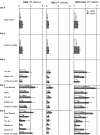
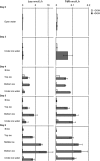
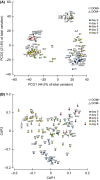
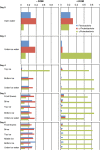

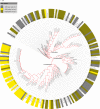
References
-
- Abdo Z, Schuette UME, Bent SJ, Williams CJ, Forney LJ, Joyce P. Statistical methods for characterizing diversity of microbial communities by analysis of terminal restriction fragment length polymorphisms of 16S rRNA genes. Environ. Microbiol. 2006;8:929–938. - PubMed
-
- Allers E, Gomez-Consarnau L, Pinhassi J, Gasol JM, Simek K, Pernthaler J. Response of Alteromonadaceae and Rhodobacteriaceae to glucose and phosphorus manipulation in marine mesocosms. Environ. Microbiol. 2007;9:2417–2429. - PubMed
-
- Alonso-Saez L, Sanchez O, Gasol JM. Bacterial uptake of low molecular weight organics in the subtropical Atlantic: are major phylogenetic groups functionally different? Limnol. Oceanogr. 2012;57:798–808.
-
- Alvarez-Aviles L, Simpson WR, Douglas TA, Sturm M, Perovich D, Domine F. Frost flower chemical composition during growth and its implications for aerosol production and bromine activation. J. Geophys. Res. Atmos. 2008;113:D21304.
Publication types
MeSH terms
Substances
LinkOut - more resources
Full Text Sources
Other Literature Sources

